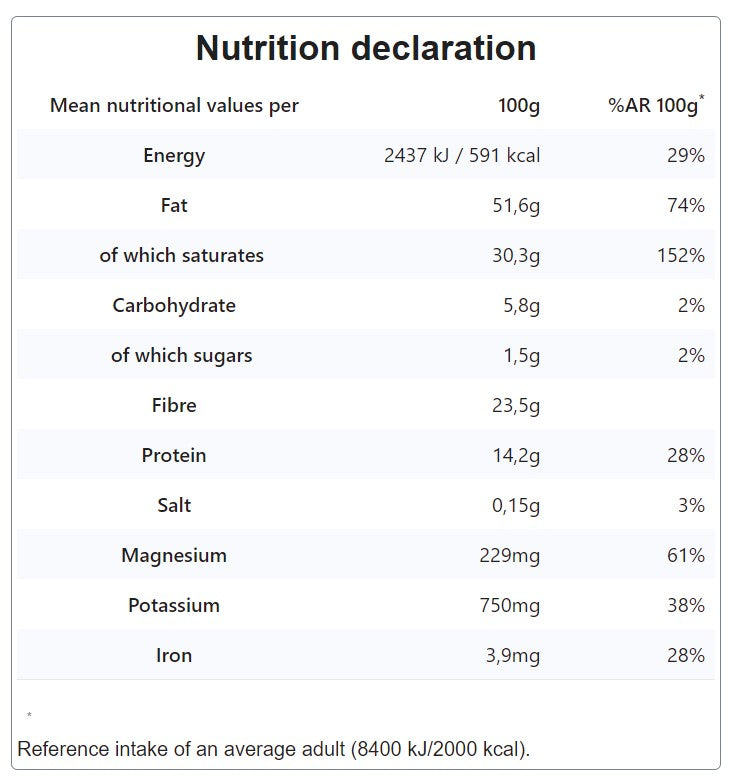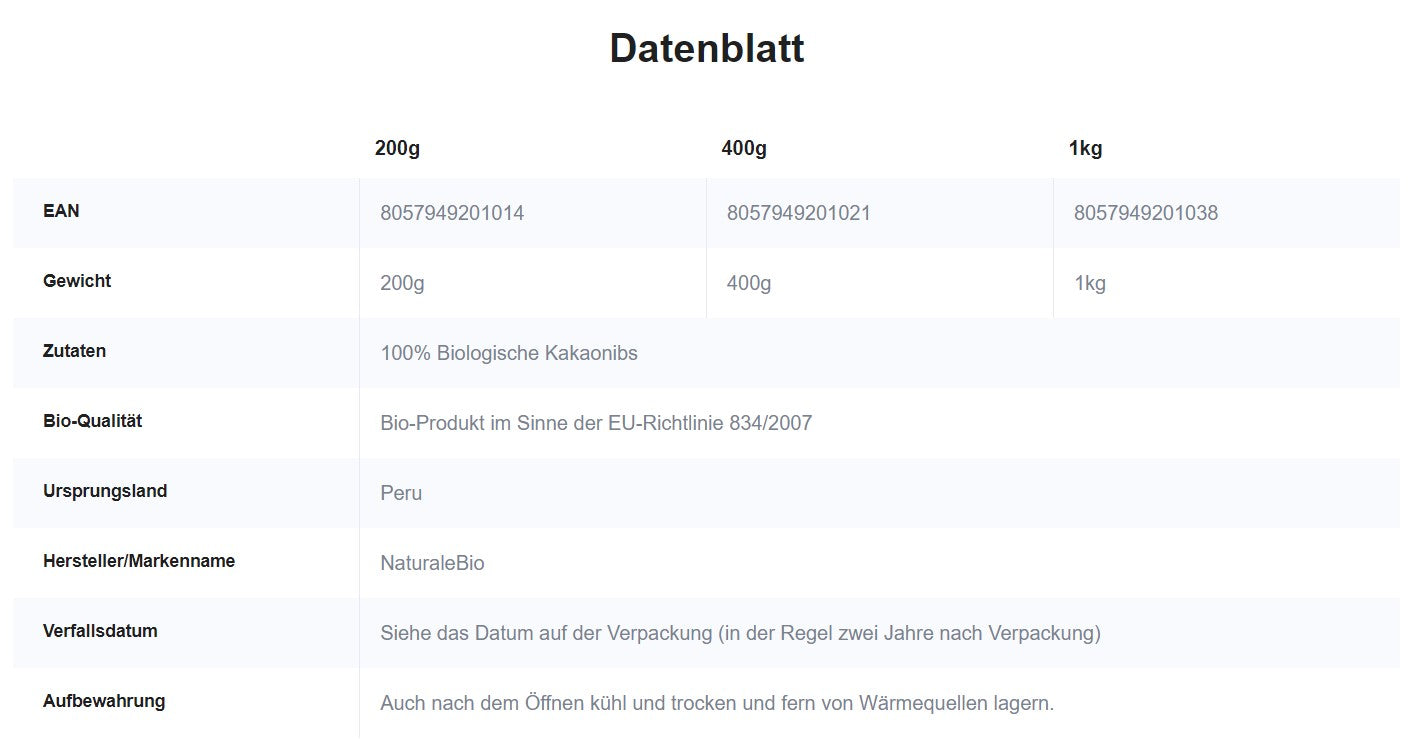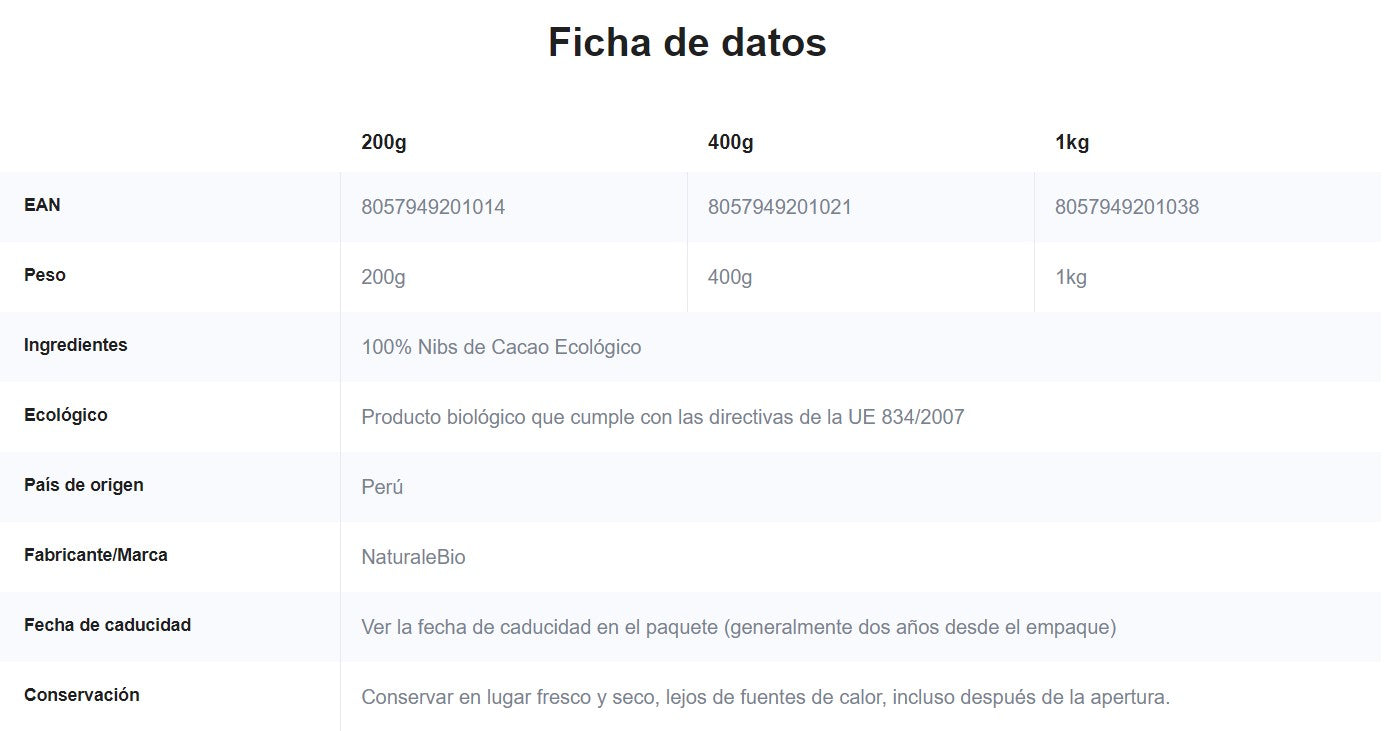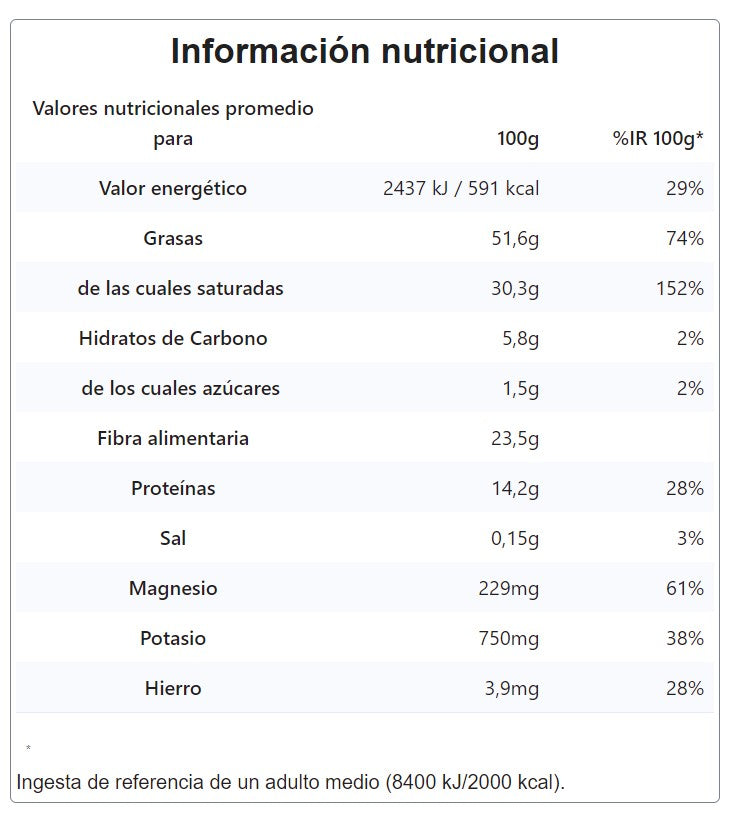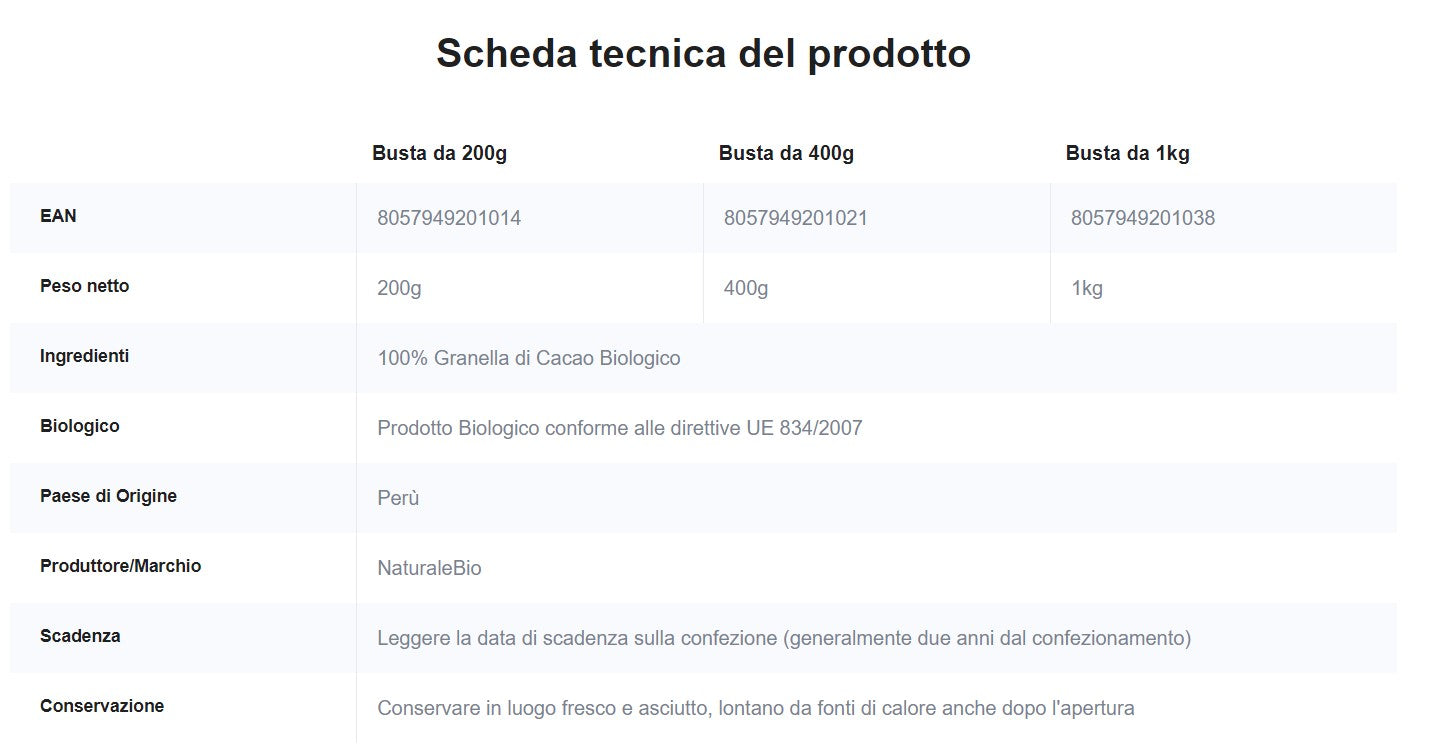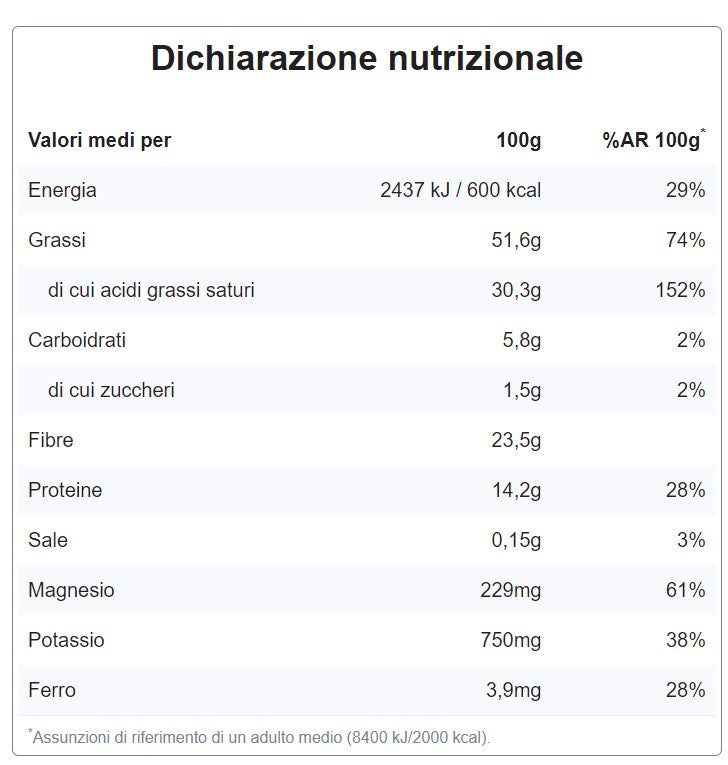Your basket is empty
Already have an account? Log in to check out faster.
Already have an account? Log in to check out faster.
Organic Raw Cacao Nibs. 100% Peruvian, Natural and Pure. Made in Peru from The Theobroma Cacao Plant. Source of Magnesium, Potassium and Iron.
Couldn't load pickup availability.
Cacao is what Linnaeus called Theobroma, from Theos meaning “god” and broma “food”, or food of the gods. Cacao is a tropical tree whose natural environment is in the lower layer of the rainforest. It therefore finds its favorable habitat in tropical forests, where it finds a constant climate all year round, with abundant rainfall well distributed throughout the year.
Cocoa requires a complex and long process. Cocoa beans are harvested manually and the drying method takes place at low temperatures to preserve all the nutrients inside them intact, they are cooled, shelled (removed from the film that surrounds them) and then crushed.
Pure and 100% Organic. Without the use of pesticides and unnatural chemical fertilizers that are not helpful for the body and health. Produced in Peru and certified Organic by control bodies authorized by the Ministry of Agriculture.
Biological
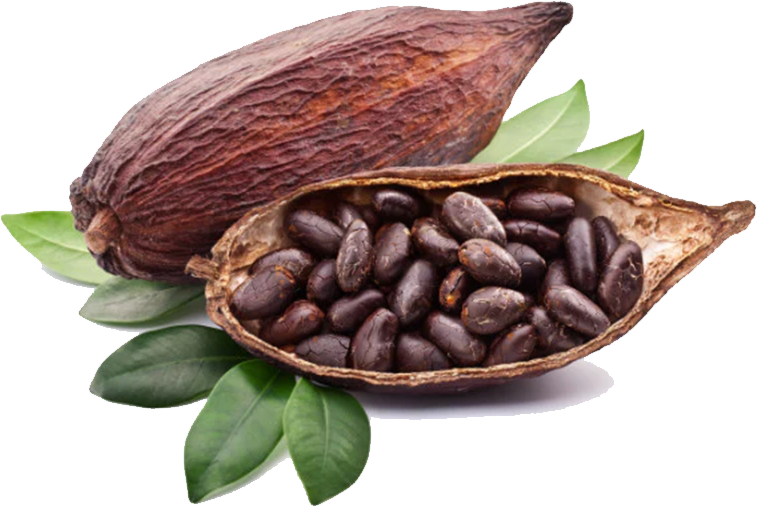
Cocoa requires a complex and long process. Cocoa beans are harvested manually and the drying method takes place at low temperatures to preserve all the nutrients inside them intact, they are cooled, shelled (removed from the film that surrounds them) and then crushed.
FAQ
Cocoa is what Linnaeus called Theobroma , from Theos meaning “god” and broma “food”, or food of the gods . The richness of this plant is certainly mainly contained in the beans contained in its fruit (cabosse). The beans can be eaten raw, or they can be reduced to granules or powder depending on the type of consumption.
The wild cocoa plant is very diverse . Throughout its history it has given rise to a huge variety of within its species, due to numerous mutations. The plant develops in height and reaches 2 meters, then the branches extend to form a roof, until reaching 3 meters. The cocoa plant produces fruit continuously , but in general each plant gives two harvests, one before and one after the rainy season. From the flower to the ripening of the pod , which is the fruit, it takes about 6 months. The life of a plant is about 25 years and it is not a plant suitable for intensive cultivation.
Cacao is a tropical tree whose natural habitat is in the lower layer of the rainforest . All species of cocoa need regions where the temperature and humidity are high, rainfall is heavy and shade is dense. The plant grows only below 1000 m altitude, on slightly acidic and humid, but well-drained soils. It therefore finds its favorable habitat in tropical forests , where it finds a constant climate all year round, with abundant rainfall well distributed throughout the year.
The first evidence of a rudimentary production of chocolate dates back to 1800 BC in the areas of Central America in today's Mexico. The history of the Maya is also closely linked to cocoa, they were probably the first to cultivate the plants. Cocoa was also very important from an economic point of view, with the development of the Toltec and Aztec civilizations, cocoa beans were also used as currency. The first to know about it was Christopher Columbus in 1502, when the Aztec leader offered hospitality and cocoa beans, the country's currency, to the whites who came from far away. It later arrived in Europe and is still appreciated throughout the world. Today cocoa beans are a commodity , therefore a primary product that constitutes a fundamental object of international exchange, with a unique global value.
Our cocoa comes from organic farming . You can find cocoa in the form of beans, nibs or powder. The cocoa nib keeps all the nutritional properties of cocoa intact thanks to drying at low temperatures. The cocoa beans are cleaned and divided according to size, shelled (removed from the film that surrounds them) and then crushed. The aromatic profiles of cocoa can be countless and must be intense and persistent. By touch (by touch we mean the tactile sensations perceived by our tongue in contact with cocoa) we must recognize the fineness and roundness of cocoa, while astringency or the sensation of decreased salivation must be almost absent.
Organic cocoa nibs are considered one of the best ways to integrate this precious food into your diet. Cocoa nibs can be eaten as a convenient snack or in smoothies or desserts.
Cocoa nibs can be taken in the following ways:
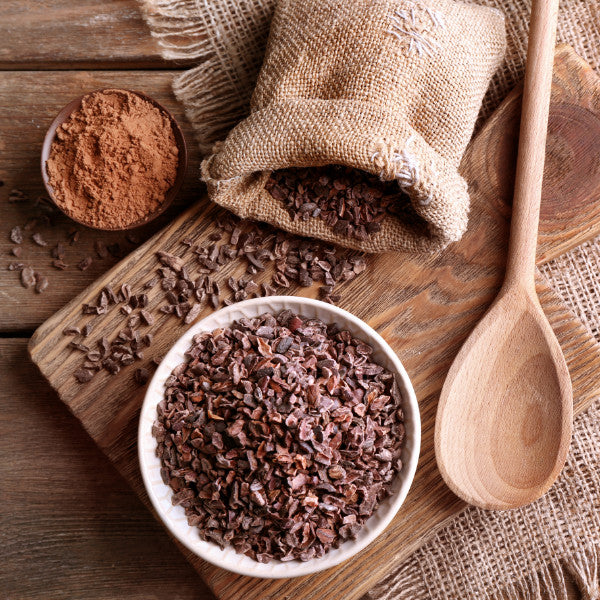
Harvesting. Harvesting and processing is almost entirely done manually.
Fermentation. The beans are completely covered with a white, gelatinous substance, which triggers the fermentation process and can last from 5 to 7 days.
Lifting. During fermentation the beans are moved every day with special shovels, this is still done manually.
Drying. Cocoa beans are dried in the sun, at low temperatures to immediately stop the fermentation process.
Cleaning and Selection. The beans are shelled and cleaned using a machine composed of cylinders and divided according to their size.
Grinding. The beans are crushed into grains.
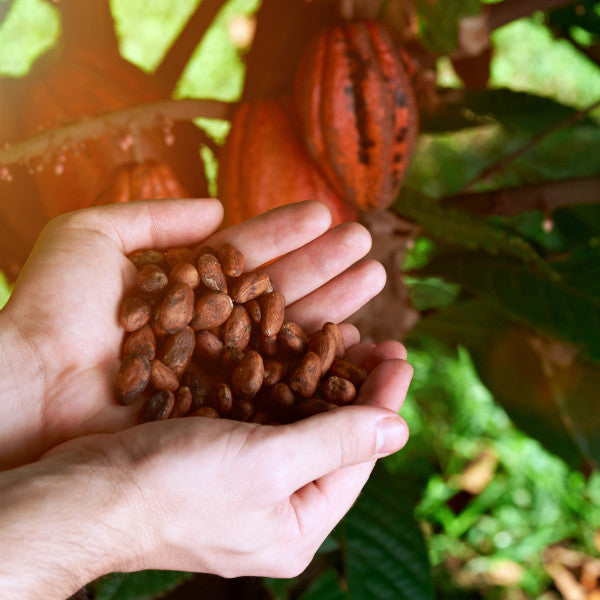
Our cocoa nibs are 100% pure and organic, produced in Peru on organic plantations and approved by the Control Body of the Ministry of Agricultural Policies. Our cocoa comes from Peru, a South American country among the first in the world. for the quality of the cocoa and for its thousand-year-old tradition.
At NaturaleBio we pay particular attention in selecting all our organic products.
Organic cocoa nibs are considered an excellent way to integrate this precious food into your diet.

